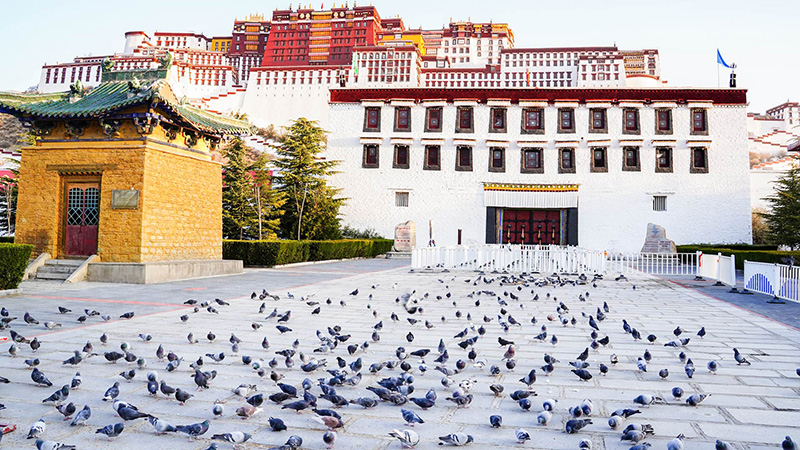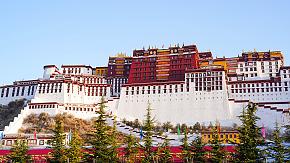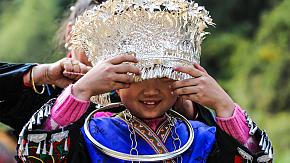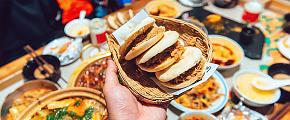Potala Palace in Lhasa: Facts, Architecture, and Travel Tips
What is the highest palace in the world? It stands on the roof of the world, and from any Angle, its background is the vast sky. This not-to-be-missed attraction in China is the Potala Palace, which has been described as the pearl of Tibetan culture. If you're planning to take a trip to China, the Potala Palace in Tibet could be on your bucket list.
Potala Palace Quick Facts
The Potala Palace is among the world's most remarkable historic landmarks, celebrated for its grand architecture, cultural significance, and deep connection to Tibetan history and religion. Recognized as a UNESCO World Cultural Heritage Site in 1994, it stands as a symbol of Tibet's enduring spiritual and cultural identity.
Where Is the Potala Palace
Located on Red Mountain in the heart of Lhasa, Tibet, in western China, the Potala Palace dominates the skyline and serves as a spiritual symbol of the region.
When Was the Potala Palace Built
Historical records indicate that the palace was first constructed in the 7th century AD during the reign of Songtsen Gampo, the 33rd ruler of the Tubo Kingdom.
What Is the Altitude of the Potala Palace
The Potala Palace stands at an elevation of about 3,700 meters (12,140 feet) above sea level, overlooking the city of Lhasa and the surrounding valleys.
What Is the Function of the Potala Palace
For centuries, it served as the political and religious center of Tibet, housing successive Dalai Lamas and key government offices. Today, it remains one of China's most iconic landmarks, attracting pilgrims and travelers from around the world.
How Much of the Ticket Price of the Potala Palace
Admission fees for the Potala Palace vary by season. During the peak season (May - October), tickets cost approximately CNY 200 per person, while in the off-season (November - April), the price is around CNY 100.
What Is the Opening Hours of the Potala Palace
The Potala Palace is generally open from 9:00 AM to 4:00 PM, though schedules may vary during religious events or maintenance periods. Each visit inside the palace complex is typically limited to about one hour to manage visitor flow.
 The Potala Palace Printed on the 50 Yuan
The Potala Palace Printed on the 50 Yuan
Architecture and Layout of the Potala Palace
With its distinctive Tibetan architectural style, the Potala Palace is one of the best-preserved palace complexes in Tibet and a masterpiece of world architecture. Built mainly from stone and wood rather than earth, it exemplifies the unique harmony between Tibetan aesthetics and the natural mountain landscape. The entire complex is divided into two main sections: the White Palace and the Red Palace.
White Palace Complex
The White Palace, named for its striking white exterior walls, once served as the living and working quarters for the Dalai Lamas and their attendants. Because of the abundant sunlight that shines on its eastern and western sides, parts of the palace are known as the East and West Daylight Halls.
 White Palace Complex
White Palace Complex
West Daylight Hall
The West Daylight Hall is the original section of the palace, while the East Daylight Hall was added later with a similar layout. These halls functioned as the private chambers and administrative offices of the 13th and 14th Dalai Lamas. Access to these halls was strictly hierarchical, limited to senior monks and high-ranking officials. Inside are a pilgrimage hall, a sutra hall, a study room, and a bedroom, all exquisitely decorated.
East Daylight Hall
Located on the fifth and sixth floors of the White Palace, the East Daylight Hall is the largest hall in the complex. It houses the Dalai Lama's throne and features a plaque inscribed by Emperor Tongzhi of the Qing Dynasty. Important ceremonies such as enthronement rituals and major religious events were traditionally held here.
Deyang Shar
Halfway up the eastern slope of the White Palace lies Deyang Shar, a spacious square where the Dalai Lama once watched Tibetan opera and hosted public gatherings. Monastic schools and auxiliary buildings stand on the north and south sides of the square.
Zhasha Residences
Built as residences for the monks serving in the Potala Palace, the Zhasha quarters once housed more than 2,500 monks (not 25,000, according to historical data). Their white outer walls are an integral part of the White Palace's overall appearance.
Red Palace Complex
The Red Palace, situated at the center and uppermost part of the Potala, is easily recognized by its deep red façade. It houses numerous stupas, chapels, and Buddhist halls, symbolizing the religious heart of Tibetan Buddhism.
 Red Palace Complex
Red Palace Complex
Hall of the Dharma King & The Hall of Saints
At the core of the Red Palace are the Hall of the Dharma King (Trulje Chepo) and the Hall of Saints (Palpa Lhakhang), both of which date back to Tibet's early dynastic period. The Hall of the Dharma King occupies the central position of the palace, built above the summit of Marpori Mountain. The Hall of Saints enshrines a sandalwood statue of Songtsen Gampo's central deity and is surrounded by ornate golden domes and shining stupas on the rooftop terrace.
Other Palaces in the Red Palaces
Several other halls in the Red Palace hold significant religious and historical value:
Hall of the Three Realms of Prosperity (Satsang Rangye): The highest hall in the Red Palace, housing a vast collection of Buddhist scriptures and portraits of Qing emperors.
Hall of Altars (Lhakhang): Contains three large bronze mandalas dedicated to the three Tantric Buddhas.
Hall of Holiness (Rinchen Lhakhang): Dedicated to the Nyingma master Padmasambhava (Guru Rinpoche) and his reincarnations.
Hall of Lineage (Zhongyel Lhakhang): Houses a golden statue of the twelve-year-old Shakyamuni, a silver statue of the Fifth Dalai Lama, and the stupa of the Tenth Dalai Lama.
 Potala Palace
Potala Palace
The Collections Inside the Potala Palace
Countless Historical Treasures
The Potala Palace is a paradise for archaeologists, where a vast number of historical artifacts are collected and preserved, including stupas, statues, murals, thangkas, scriptures, and texts, as well as the golden books, jade books, golden seals, and other treasures from the Ming and Qing emperors that indicate the relationship between the Tibetan local government and the central government in history. Among them, one of the most striking is the eight spiritual pagodas from the Fifth Dynasty onwards, gilded and decorated with a dazzling array of precious stones, making them a temple of art.
The Fifth Dalai Lama's stupa is the highest pagoda in the palace; it is wrapped with gold and inlaid with precious gems and jewels. Although the other pagodas are not as tall as the 5th Dalai Lama's stupa, the pagoda's exterior is also decorated with gold and jewelry, making it extremely valuable.
There is a large Bronze Altar Castle in the Lhakhang Hall, which is a three-dimensional model of the world structure of Buddhist teachings, and a pulpit where the Buddha lived and spoke. You will see a long-life tablet of the Kangxi Emperor and a painting of the Qianlong Emperor in Tibetan, Chinese, Manchu, and Mongolian characters in the Satsunglangje Hall. This represents the subordination of the Dalai to the central government over the ages. There is also a large amount of luxurious furnishings and costumes inside the palace where the Dalai resides.
The Murals of the Potala Palace
The interior of the Potala Palace looks like a vast gallery of paintings and art, compared with the Mogao Grottoes in Dunhuang; here, all the palaces, Buddhist halls, and corridor walls are painted with frescoes and surrounded by various relief sculptures. Most of the murals and engravings are brilliant and colorful. The subjects include highland scenery, historical legends, Buddhist stories, and scenes from the construction of the Potala Palace, all of which have high historical and artistic value.
Potala Palace Square
Potala Palace Square is the highest urban square in the world. It is also an essential part of the Potala Palace, a World Heritage Site, and is also a modern square that integrates leisure, culture, and assembly.
Regarding the overall layout, Potala Palace Square is wide and flat, flanked by the Tibetan Working People's Cultural Palace to the south and the Potala Palace to the north. A library surrounds the Potala Palace Square, a children's playground, a lounge, and an open-air market, making it the center of Lhasa's tourism and cultural and entertainment activities.
 Prepare for Lots of Walking at a High Altitude.
Prepare for Lots of Walking at a High Altitude.
Travel Tips of the Potala Palace
Here are some tips to make your trip to the Potala Palace unforgettable.
Plan your Visit as Early as Possible
Tickets for the Potala Palace must be reserved at least one day in advance, and during the peak season (May - October) availability is very limited. Once inside, visits are typically limited to one hour to accommodate high visitor numbers.
Dress Respectfully
Tourists have to dress and act respectfully because this is a sacred palace. Remember to take off your hat and sunglasses at the entrance. Dresses and shorts are also not permitted.
No Photos, Please!
It is prohibited to take photos inside the palace due to the sacred nature of the building and the artwork.
Prepare for Lots of Walking at a High Altitude.
At 3700 meters above sea level, and with no lift service, you must climb more than 1,000 steps up to the palace. Therefore, be careful about "altitude sickness", which may cause headaches, dizziness, or shortness of breath. If you are concerned about these effects, please take an oxygen tank. Also, medicines for high altitude illness should be on your packing list.
The Nocturnal Lights of the Potala Palace
The nocturnal lights at the Potala Palace will be switched off at night, and the lights will be shut off at 22:30. You should arrive before then if you want to take night shots.
Explore Potala Palace With Us!
If you're planning to travel to China and explore the charms of Potala Palace, please don't hesitate to contact us, just simply tell us your interests and needs, and one of our travel experts will create a tailor-made itinerary for you within 24 hrs.
What Our Clients Say
Explore the latest verified reviews of Odynovo's travel services on Tripadvisor, Google, Trustpilot, Product Review and more trusted platforms.












